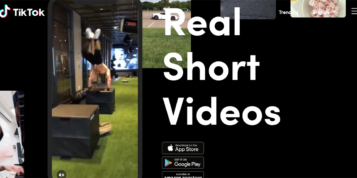Simplicity of activation and sheer potential reach are two of the main things that initially made social media an attractive platform for brands. However, this simplicity has also led to social platforms becoming quickly saturated, meaning standing out is tougher than ever. It’s no longer enough just to have a social plan in place, it is now a core strategic part of marketing activation and has to fit seamlessly with broader campaigns. This development in the landscape has led to brand activations, with winning experiences at their core, becoming a major area of investment for brands looking for creative ways to stand out, particularly on social channels.
It might be easier than ever for brands to reach large swathes of consumers, but as they become overwhelmed by the inundation of messaging broadcast to them, minute-by-minute, the power of choice has been put in their hands. This is piling on the pressure for brands but there are a handful of questions that they need to address; how can brands use winning experiences to create real impact on social? What does successful impact look like? And does success look the same to consumers and brands?
As an agency, our work with Strongbow and Walkers, amongst others, has taught us how to navigate the variations across different social platforms to maximise the opportunity. In turn, this has also helped make us more able to predict potential outcomes and reconcile the demands of three different stakeholders. Firstly, consumers, who want to win as quickly and easily as possible. Secondly, brands, who want to gather consumer data, boost sales and drive brand awareness. And finally, retailers who want to boost sales through exclusive partnerships.
The 1/9/90 rule
It’s vital to align objectives at the outset of a campaign to ensure that it will work for all parties involved. In an effort to stand out, brands might be inclined to make their winning experiences wilder and weirder than the last, putting the spotlight on consumer superstars. But it’s a risky business for brands to assume that all people want to engage on that level. The 1/9/90 rule applies here. This should be a familiar concept for any marketers working on a social media strategy for good reason. Asserting that only 1 percent of users will actively create content, 9 percent will participate by commenting, rating or sharing the content and the other 90 percent will only watch, look and read without responding, the rule is particularly relevant to winning experiences that rely on participation. This proportional logic is, in part, responsible for the stratospheric rise of reality-based experiments like 2017’s breakout success, Love Island.
The wisdom from the 1/9/90 rule must be used to inform strategies around winning experiences and can help predict their outcomes. Most social media users are voyeurs. The more brands ask of entrants, the fewer that will participate, although you might end up with higher quality data from those that do. The flip side is also true. Brands must weigh up their priorities ahead of time and tailor the experience to fit the demographic of their winners – those that win a promotion that requires low engagement initially are unlikely to want to be put on a pedestal once they are chosen.
Tailored for success
Incorporating a winning experience, with an emphasis on social, at the core of broader campaign is a creative route to standing out. Our 2017 work with Strongbow’s Epic Entrances campaign – which saw winners treated to outrageous dream entrances to three different festivals across the 2017 festival season – illustrates this and the importance of the 1/9/90 rule perfectly. The campaign required substantial consumer input which meant that entry levels were lower, but the consumer data gathered was substantial, allowing the team to deliver a more tailored winning experience that, while requiring more intense levels of maintenance, enabled us to produce more compelling content for social media. This helped meet the client objective of turning something mundane – queuing – into something amazing and reflected Strongbow’s “let’s own it” proposition.
Additionally, the Unexpected Holiday In The Bagging Area campaign for Walkers stemmed from the desire to take the pain out of the “unexpected item in bagging area” encounter that causes so much frustration for shoppers. The idea was to subvert the expectation that the daily shop is going to be tedious and devise a competition to surprise and delight. It was low engagement as the winners were surprised there and then, winning holidays to Tokyo, New York, Europe, rewarded for including Walkers in their daily shop. Reactions from winners were filmed and used to create six videos for social that included authentic responses that really brought the delight of winning to life. The exclusive campaign worked for Tesco, as it showed the unexpected joy of shopping at the store, whilst boosting reputations in the local communities, and for Walkers as it also bolstered brand love. Of course, it worked for the winners too as they were instantly rewarded and able to jet off into the sunset.
Tipped for the top
Consumers do want to win, but as a result of the sheer variety of options available to them, and shortening attention spans, the pressure is on for brands to provide high-quality experiences while simultaneously stimulating sales and entries. Balancing the consumer demand for personalisation and instant gratification with commercial demands is a major challenge.
Brands need to go into the process of creating truly winning experiences with their eyes wide open to the challenges of reconciling the differing demands of brands, retailers and consumers and put these at the core of their plans. Sheer volume of entries is not necessarily the way to achieve this, and almost certainly not on social media, where quality content, based on personalised data, will help drive participation at every stage. Starting with collective objectives and then working outwards can help make winning experiences work across platforms and ultimately gain cut-through on social media.





